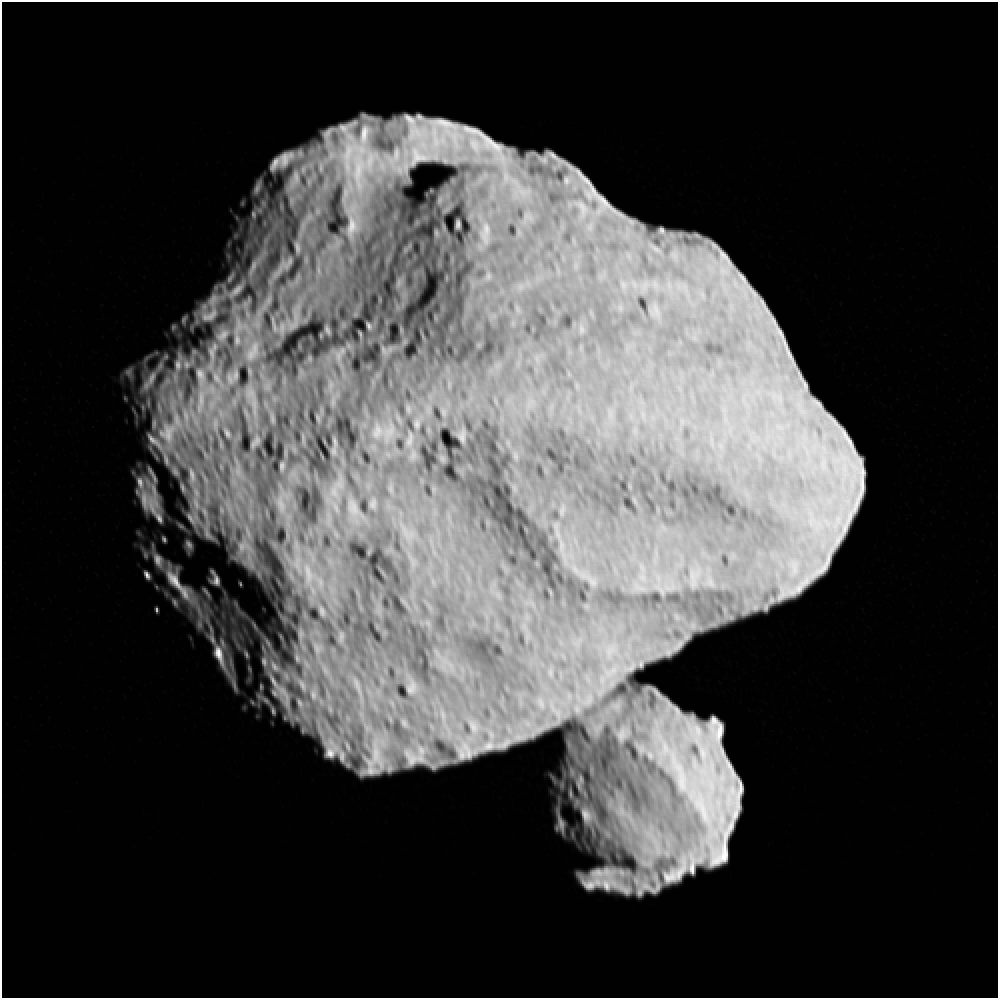The Dinkinesh asteroid, which the Lucy spacecraft made a close flyby of, turned out to be a binary one. This is evidenced by the images transmitted to Earth.

The flight of Dinkinesh took place on November 1. The Lucy probe passed from it at a distance of 430 km. Before this event, there was not much known about the asteroid. Astronomers knew its orbital characteristics, approximate size, and that it mainly consisted of silicates.
But a few weeks before Lucy’s visit, mission specialists suspected that, in fact, Dinkinesh could be the binary object. This was indicated by noticeable fluctuations in its brightness.
The images taken during the flight confirmed this assumption. Dinkinesh actually turned out to be the binary asteroid. The size of one of them is 790 m, the second is 220 m.
In the coming days, the spacecraft will continue to transmit the information collected during the flyby, which will allow astronomers to learn more about Dinkinesh. The next meeting with the celestial body will take place on April 20, 2025. On this day, Lucy will fly a 4-kilometer Donaldjohanson asteroid.
The main goal of the Lucy mission is to study the Trojan asteroids of Jupiter. The flight plan assumes that in the period from 2027 to 2033, the spacecraft will fly over at least five similar objects. Three of them have moons. It is also possible that in the future, astronomers will be able to find passing asteroids that Lucy can study.
According to https://www.nasa.gov
Follow us on Twitter to get the most interesting space news in time
https://twitter.com/ust_magazine
